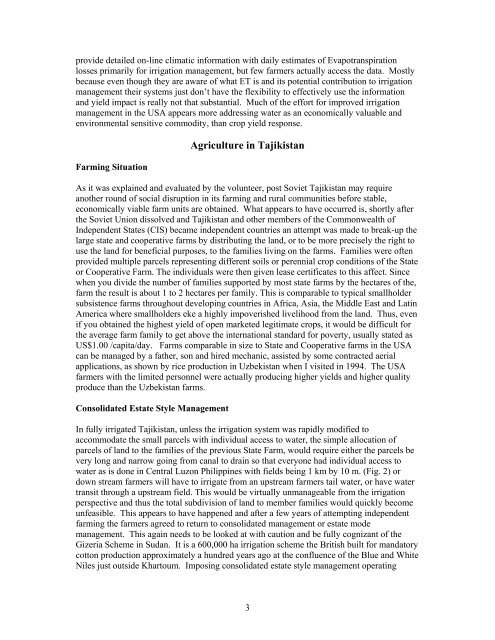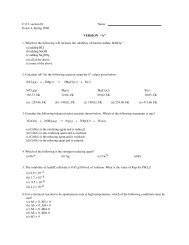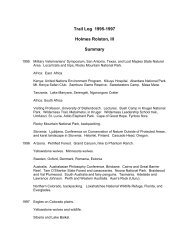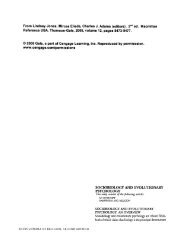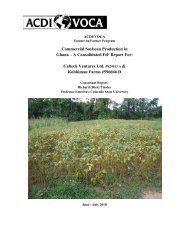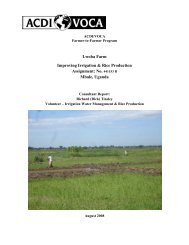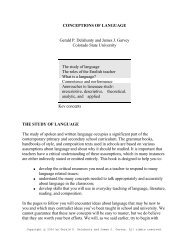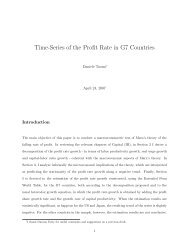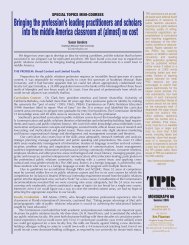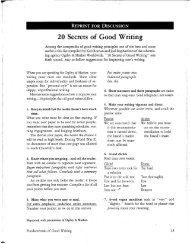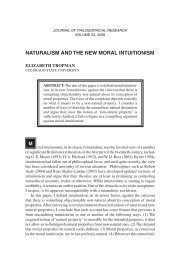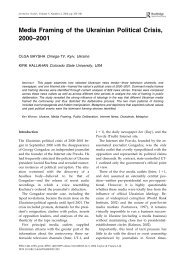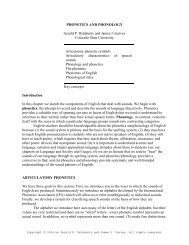Geha Foods Evaluation of Irrigation for Processed Tomatoes
Geha Foods Evaluation of Irrigation for Processed Tomatoes
Geha Foods Evaluation of Irrigation for Processed Tomatoes
Create successful ePaper yourself
Turn your PDF publications into a flip-book with our unique Google optimized e-Paper software.
provide detailed on-line climatic in<strong>for</strong>mation with daily estimates <strong>of</strong> Evapotranspiration<br />
losses primarily <strong>for</strong> irrigation management, but few farmers actually access the data. Mostly<br />
because even though they are aware <strong>of</strong> what ET is and its potential contribution to irrigation<br />
management their systems just don’t have the flexibility to effectively use the in<strong>for</strong>mation<br />
and yield impact is really not that substantial. Much <strong>of</strong> the ef<strong>for</strong>t <strong>for</strong> improved irrigation<br />
management in the USA appears more addressing water as an economically valuable and<br />
environmental sensitive commodity, than crop yield response.<br />
Farming Situation<br />
Agriculture in Tajikistan<br />
As it was explained and evaluated by the volunteer, post Soviet Tajikistan may require<br />
another round <strong>of</strong> social disruption in its farming and rural communities be<strong>for</strong>e stable,<br />
economically viable farm units are obtained. What appears to have occurred is, shortly after<br />
the Soviet Union dissolved and Tajikistan and other members <strong>of</strong> the Commonwealth <strong>of</strong><br />
Independent States (CIS) became independent countries an attempt was made to break-up the<br />
large state and cooperative farms by distributing the land, or to be more precisely the right to<br />
use the land <strong>for</strong> beneficial purposes, to the families living on the farms. Families were <strong>of</strong>ten<br />
provided multiple parcels representing different soils or perennial crop conditions <strong>of</strong> the State<br />
or Cooperative Farm. The individuals were then given lease certificates to this affect. Since<br />
when you divide the number <strong>of</strong> families supported by most state farms by the hectares <strong>of</strong> the,<br />
farm the result is about 1 to 2 hectares per family. This is comparable to typical smallholder<br />
subsistence farms throughout developing countries in Africa, Asia, the Middle East and Latin<br />
America where smallholders eke a highly impoverished livelihood from the land. Thus, even<br />
if you obtained the highest yield <strong>of</strong> open marketed legitimate crops, it would be difficult <strong>for</strong><br />
the average farm family to get above the international standard <strong>for</strong> poverty, usually stated as<br />
US$1.00 /capita/day. Farms comparable in size to State and Cooperative farms in the USA<br />
can be managed by a father, son and hired mechanic, assisted by some contracted aerial<br />
applications, as shown by rice production in Uzbekistan when I visited in 1994. The USA<br />
farmers with the limited personnel were actually producing higher yields and higher quality<br />
produce than the Uzbekistan farms.<br />
Consolidated Estate Style Management<br />
In fully irrigated Tajikistan, unless the irrigation system was rapidly modified to<br />
accommodate the small parcels with individual access to water, the simple allocation <strong>of</strong><br />
parcels <strong>of</strong> land to the families <strong>of</strong> the previous State Farm, would require either the parcels be<br />
very long and narrow going from canal to drain so that everyone had individual access to<br />
water as is done in Central Luzon Philippines with fields being 1 km by 10 m. (Fig. 2) or<br />
down stream farmers will have to irrigate from an upstream farmers tail water, or have water<br />
transit through a upstream field. This would be virtually unmanageable from the irrigation<br />
perspective and thus the total subdivision <strong>of</strong> land to member families would quickly become<br />
unfeasible. This appears to have happened and after a few years <strong>of</strong> attempting independent<br />
farming the farmers agreed to return to consolidated management or estate mode<br />
management. This again needs to be looked at with caution and be fully cognizant <strong>of</strong> the<br />
Gizeria Scheme in Sudan. It is a 600,000 ha irrigation scheme the British built <strong>for</strong> mandatory<br />
cotton production approximately a hundred years ago at the confluence <strong>of</strong> the Blue and White<br />
Niles just outside Khartoum. Imposing consolidated estate style management operating<br />
3


